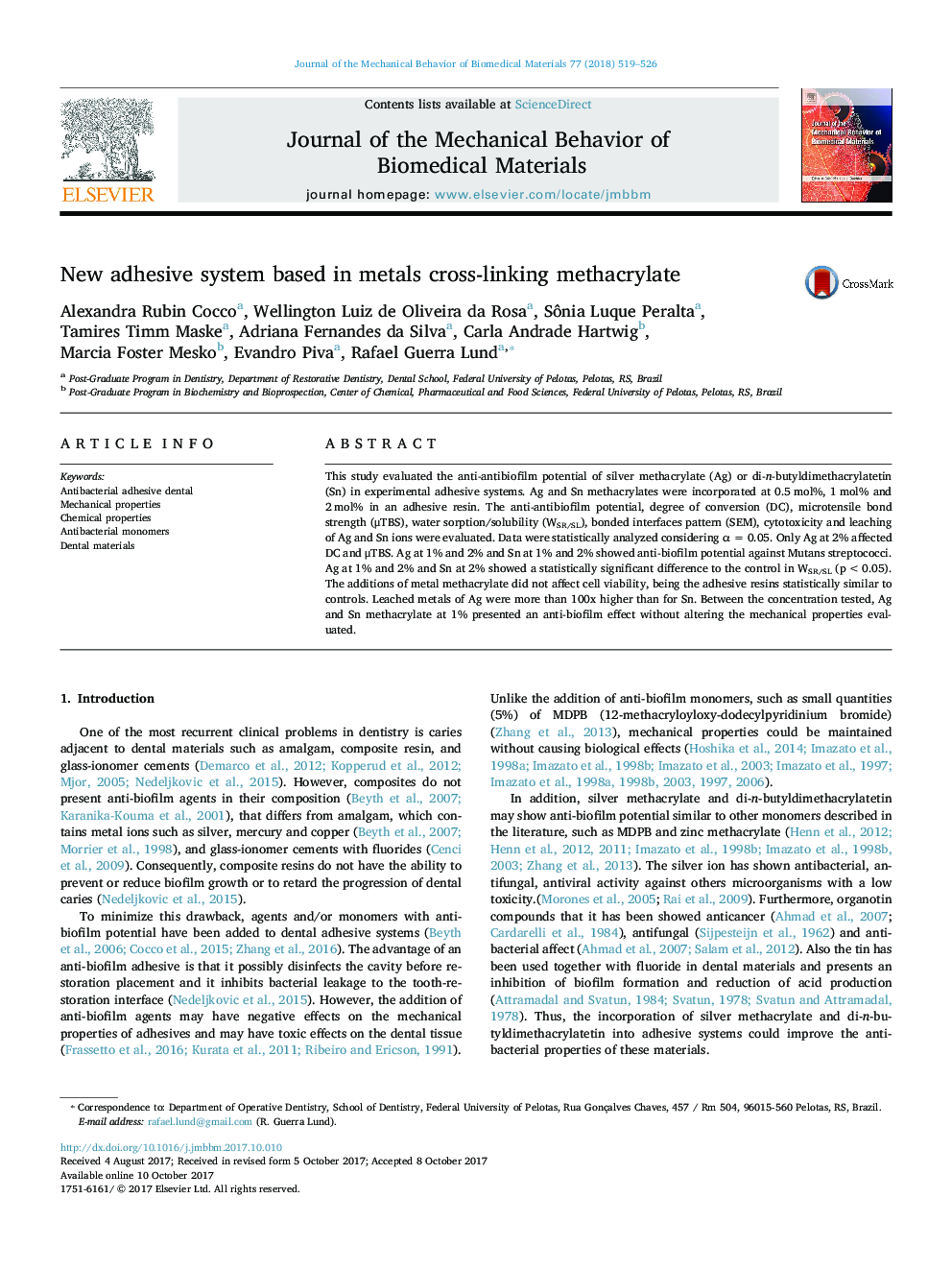| Article ID | Journal | Published Year | Pages | File Type |
|---|---|---|---|---|
| 5020384 | Journal of the Mechanical Behavior of Biomedical Materials | 2018 | 8 Pages |
This study evaluated the anti-antibiofilm potential of silver methacrylate (Ag) or di-n-butyldimethacrylatetin (Sn) in experimental adhesive systems. Ag and Sn methacrylates were incorporated at 0.5 mol%, 1 mol% and 2 mol% in an adhesive resin. The anti-antibiofilm potential, degree of conversion (DC), microtensile bond strength (μTBS), water sorption/solubility (WSR/SL), bonded interfaces pattern (SEM), cytotoxicity and leaching of Ag and Sn ions were evaluated. Data were statistically analyzed considering α = 0.05. Only Ag at 2% affected DC and μTBS. Ag at 1% and 2% and Sn at 1% and 2% showed anti-biofilm potential against Mutans streptococci. Ag at 1% and 2% and Sn at 2% showed a statistically significant difference to the control in WSR/SL (p < 0.05). The additions of metal methacrylate did not affect cell viability, being the adhesive resins statistically similar to controls. Leached metals of Ag were more than 100x higher than for Sn. Between the concentration tested, Ag and Sn methacrylate at 1% presented an anti-biofilm effect without altering the mechanical properties evaluated.
